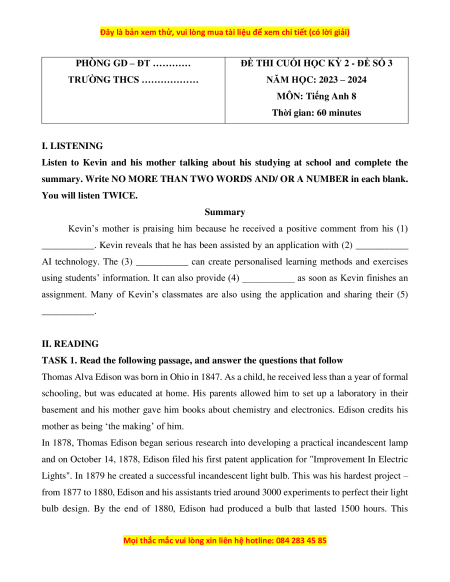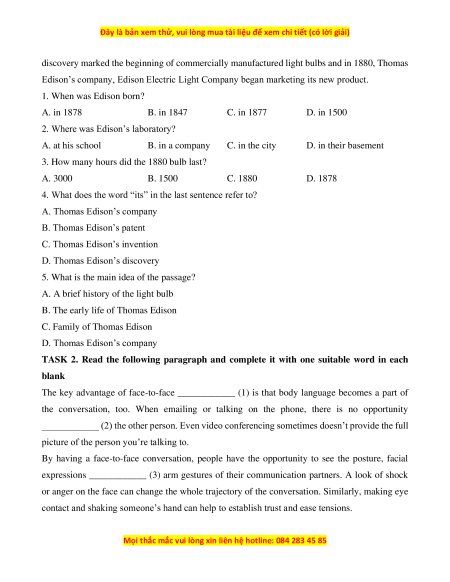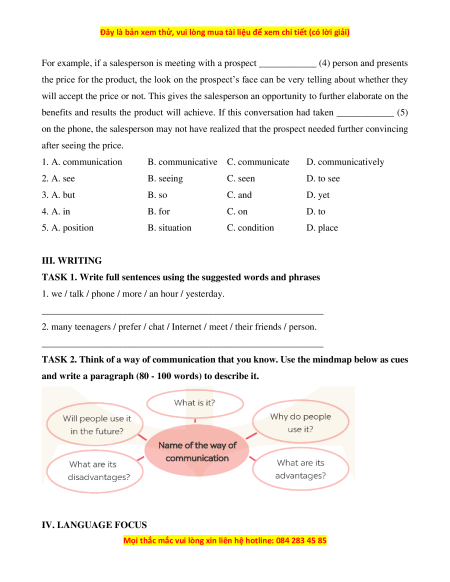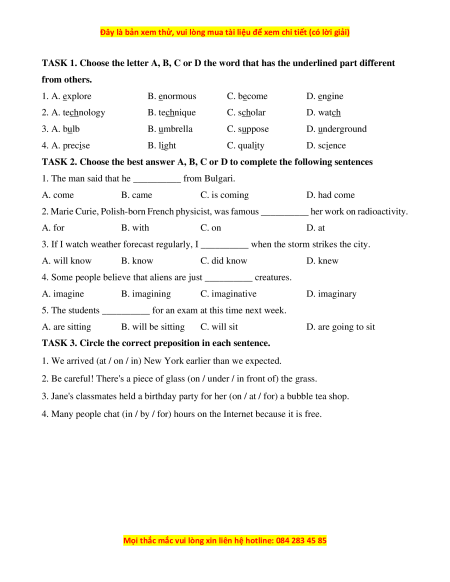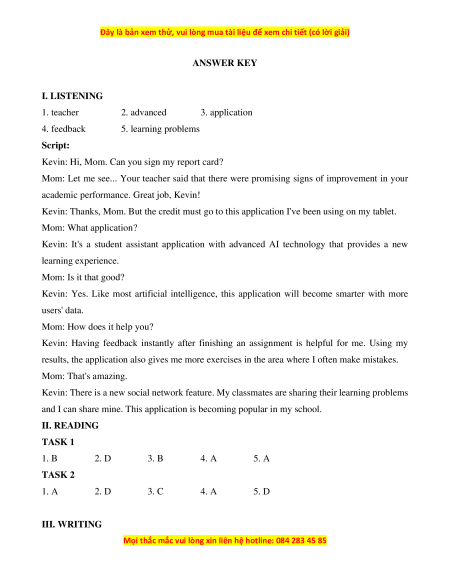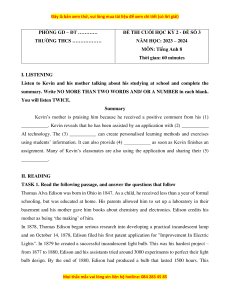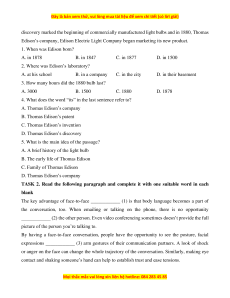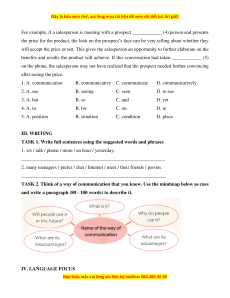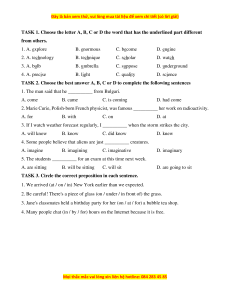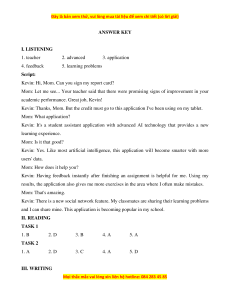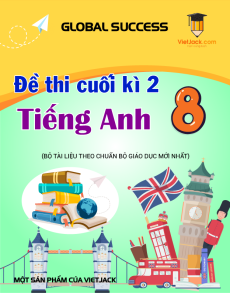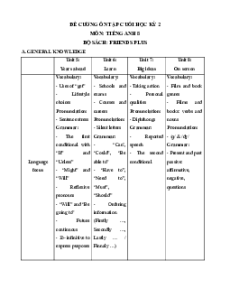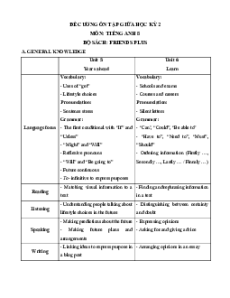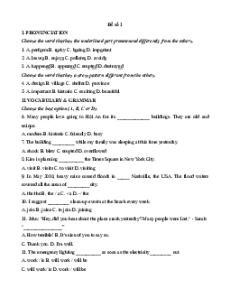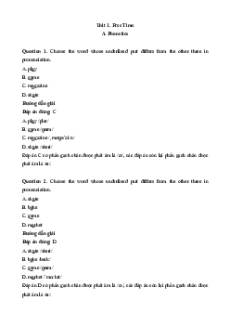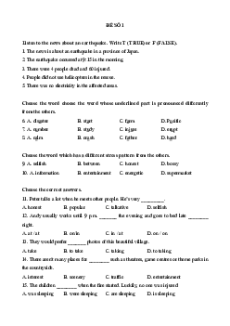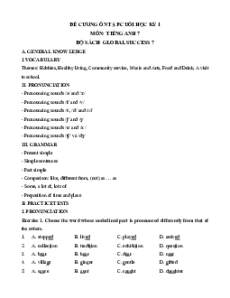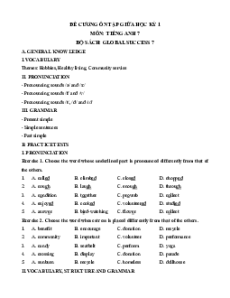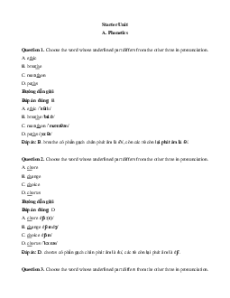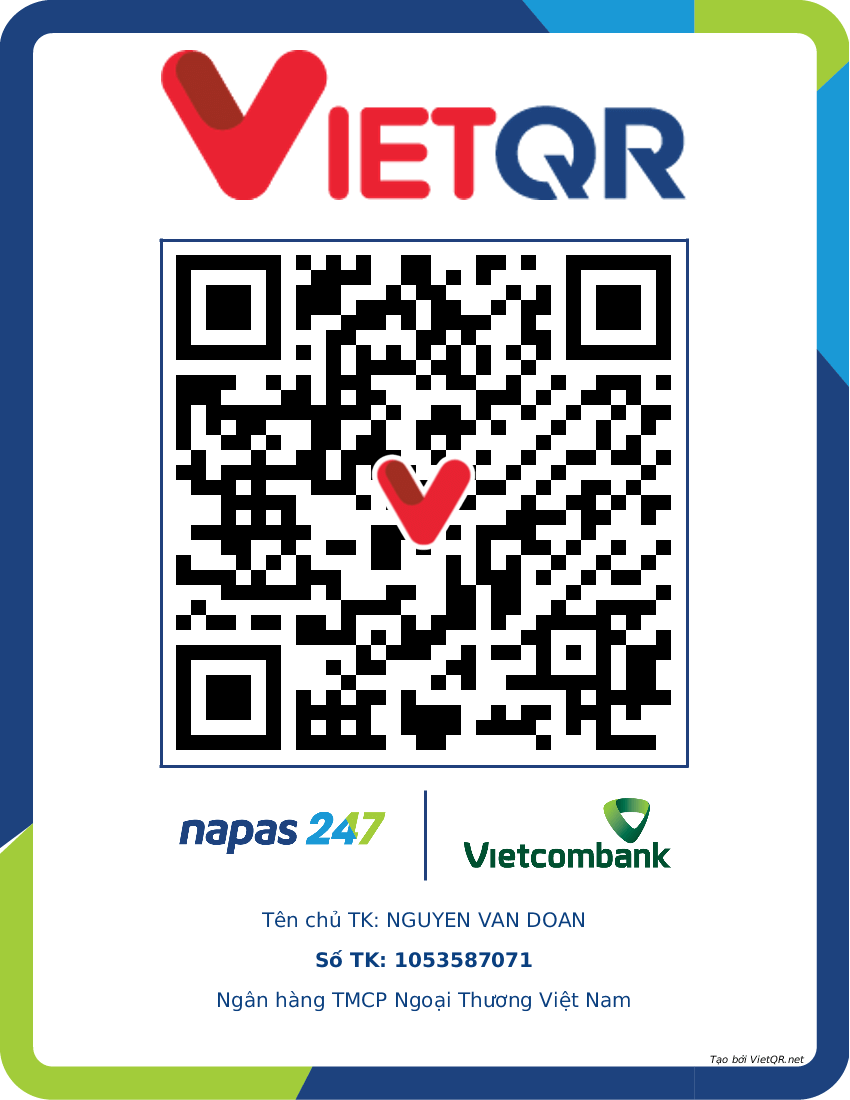PHÒNG GD – ĐT …………
ĐỀ THI CUỐI HỌC KỲ 2 - ĐỀ SỐ 3
TRƯỜNG THCS ………………
NĂM HỌC: 2023 – 2024 MÔN: Tiếng Anh 8
Thời gian: 60 minutes I. LISTENING
Listen to Kevin and his mother talking about his studying at school and complete the
summary. Write NO MORE THAN TWO WORDS AND/ OR A NUMBER in each blank.
You will listen TWICE. Summary
Kevin’s mother is praising him because he received a positive comment from his (1)
___________. Kevin reveals that he has been assisted by an application with (2) ___________
AI technology. The (3) ___________ can create personalised learning methods and exercises
using students’ information. It can also provide (4) ___________ as soon as Kevin finishes an
assignment. Many of Kevin’s classmates are also using the application and sharing their (5) ___________. II. READING
TASK 1. Read the following passage, and answer the questions that follow
Thomas Alva Edison was born in Ohio in 1847. As a child, he received less than a year of formal
schooling, but was educated at home. His parents allowed him to set up a laboratory in their
basement and his mother gave him books about chemistry and electronics. Edison credits his
mother as being ‘the making’ of him.
In 1878, Thomas Edison began serious research into developing a practical incandescent lamp
and on October 14, 1878, Edison filed his first patent application for "Improvement In Electric
Lights". In 1879 he created a successful incandescent light bulb. This was his hardest project –
from 1877 to 1880, Edison and his assistants tried around 3000 experiments to perfect their light
bulb design. By the end of 1880, Edison had produced a bulb that lasted 1500 hours. This
discovery marked the beginning of commercially manufactured light bulbs and in 1880, Thomas
Edison’s company, Edison Electric Light Company began marketing its new product. 1. When was Edison born? A. in 1878 B. in 1847 C. in 1877 D. in 1500
2. Where was Edison’s laboratory? A. at his school B. in a company C. in the city D. in their basement
3. How many hours did the 1880 bulb last? A. 3000 B. 1500 C. 1880 D. 1878
4. What does the word “its” in the last sentence refer to? A. Thomas Edison’s company B. Thomas Edison’s patent
C. Thomas Edison’s invention
D. Thomas Edison’s discovery
5. What is the main idea of the passage?
A. A brief history of the light bulb
B. The early life of Thomas Edison C. Family of Thomas Edison D. Thomas Edison’s company
TASK 2. Read the following paragraph and complete it with one suitable word in each blank
The key advantage of face-to-face ____________ (1) is that body language becomes a part of
the conversation, too. When emailing or talking on the phone, there is no opportunity
____________ (2) the other person. Even video conferencing sometimes doesn’t provide the full
picture of the person you’re talking to.
By having a face-to-face conversation, people have the opportunity to see the posture, facial
expressions ____________ (3) arm gestures of their communication partners. A look of shock
or anger on the face can change the whole trajectory of the conversation. Similarly, making eye
contact and shaking someone’s hand can help to establish trust and ease tensions.
For example, if a salesperson is meeting with a prospect ____________ (4) person and presents
the price for the product, the look on the prospect’s face can be very telling about whether they
will accept the price or not. This gives the salesperson an opportunity to further elaborate on the
benefits and results the product will achieve. If this conversation had taken ____________ (5)
on the phone, the salesperson may not have realized that the prospect needed further convincing after seeing the price. 1. A. communication
B. communicative C. communicate D. communicatively 2. A. see B. seeing C. seen D. to see 3. A. but B. so C. and D. yet 4. A. in B. for C. on D. to 5. A. position B. situation C. condition D. place III. WRITING
TASK 1. Write full sentences using the suggested words and phrases
1. we / talk / phone / more / an hour / yesterday.
___________________________________________________________
2. many teenagers / prefer / chat / Internet / meet / their friends / person.
___________________________________________________________
TASK 2. Think of a way of communication that you know. Use the mindmap below as cues
and write a paragraph (80 - 100 words) to describe it. IV. LANGUAGE FOCUS
TASK 1. Choose the letter A, B, C or D the word that has the underlined part different from others. 1. A. explore B. enormous C. become D. engine 2. A. technology B. technique C. scholar D. watch 3. A. bulb B. umbrella C. suppose D. underground 4. A. precise B. light C. quality D. science
TASK 2. Choose the best answer A, B, C or D to complete the following sentences
1. The man said that he __________ from Bulgari. A. come B. came C. is coming D. had come
2. Marie Curie, Polish-born French physicist, was famous __________ her work on radioactivity. A. for B. with C. on D. at
3. If I watch weather forecast regularly, I __________ when the storm strikes the city. A. will know B. know C. did know D. knew
4. Some people believe that aliens are just __________ creatures. A. imagine B. imagining C. imaginative D. imaginary
5. The students __________ for an exam at this time next week. A. are sitting B. will be sitting C. will sit D. are going to sit
TASK 3. Circle the correct preposition in each sentence.
1. We arrived (at / on / in) New York earlier than we expected.
2. Be careful! There's a piece of glass (on / under / in front of) the grass.
3. Jane's classmates held a birthday party for her (on / at / for) a bubble tea shop.
4. Many people chat (in / by / for) hours on the Internet because it is free.
Đề thi cuối kì 2 Tiếng Anh 8 Global success (Đề 3 kèm file nghe)
2 K
1 K lượt tải
MUA NGAY ĐỂ XEM TOÀN BỘ TÀI LIỆU
CÁCH MUA:
- B1: Gửi phí vào TK:
1133836868- CT TNHH DAU TU VA DV GD VIETJACK - Ngân hàng MB (QR) - B2: Nhắn tin tới Zalo VietJack Official ( nhấn vào đây ) để xác nhận thanh toán và tải tài liệu - giáo án
Liên hệ ngay Hotline hỗ trợ: 084 283 45 85
Đề thi được cập nhật thêm mới liên tục hàng năm sau mỗi kì thi trên cả nước. Chúng tôi đảm bảo đủ số lượng đề đã cam kết hoặc có thể nhiều hơn, tất cả có BẢN WORD, LỜI GIẢI CHI TIẾT và tải về dễ dàng.
Để tải tài liệu gốc về máy bạn click vào nút Tải Xuống ở trên!
Thuộc bộ (mua theo bộ để tiết kiệm hơn):
- Tailieugiaovien.com.vn giới thiệu bộ 5 đề thi cuối kì 2 kèm file nghe Tiếng anh 8 Global success mới nhất nhằm giúp Giáo viên có thêm tài liệu tham khảo ra đề thi Tiếng anh lớp 8.
- File word có lời giải chi tiết 100%.
- Mua trọn bộ sẽ tiết kiệm hơn tải lẻ 50%.
Đánh giá
4.6 / 5(1956 )5
4
3
2
1
Trọng Bình
Tài liệu hay
Giúp ích cho tôi rất nhiều
Duy Trần
Tài liệu chuẩn
Rất thích tài liệu bên VJ soạn (bám sát chương trình dạy)
